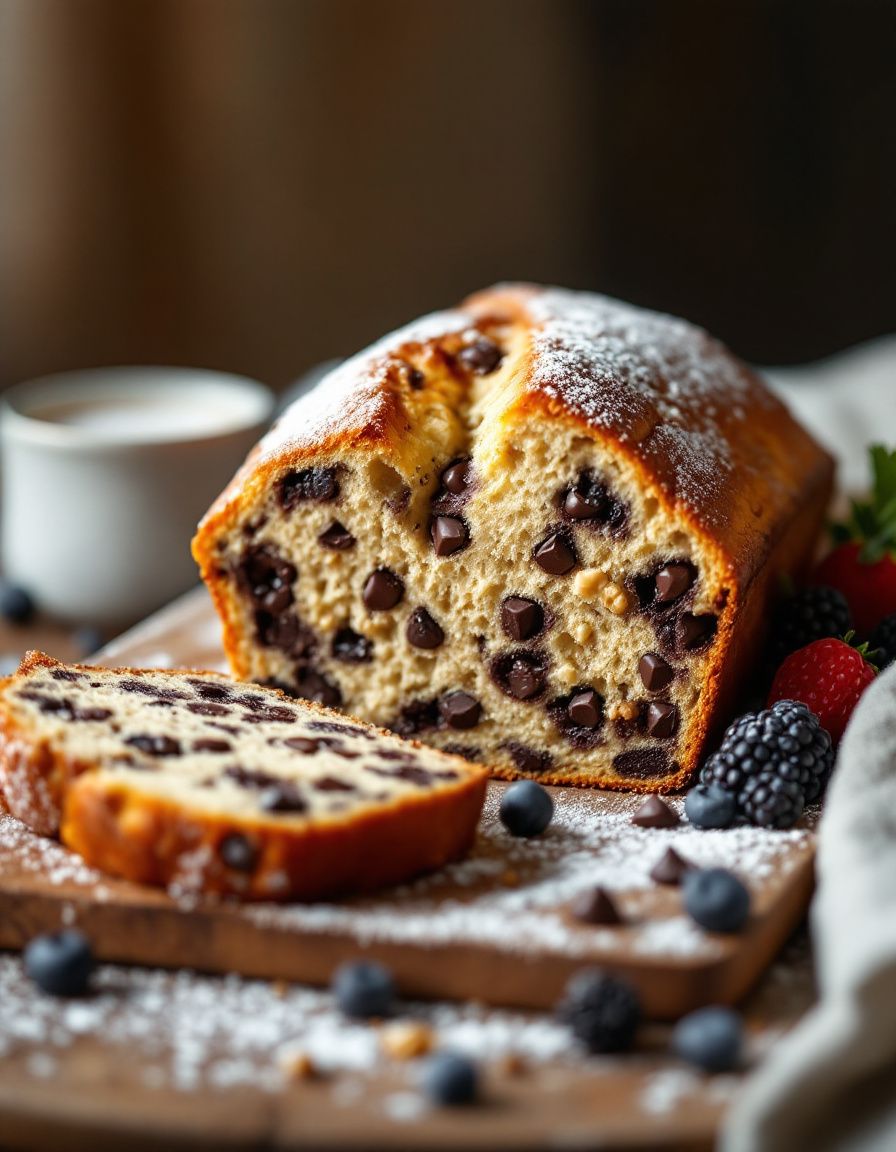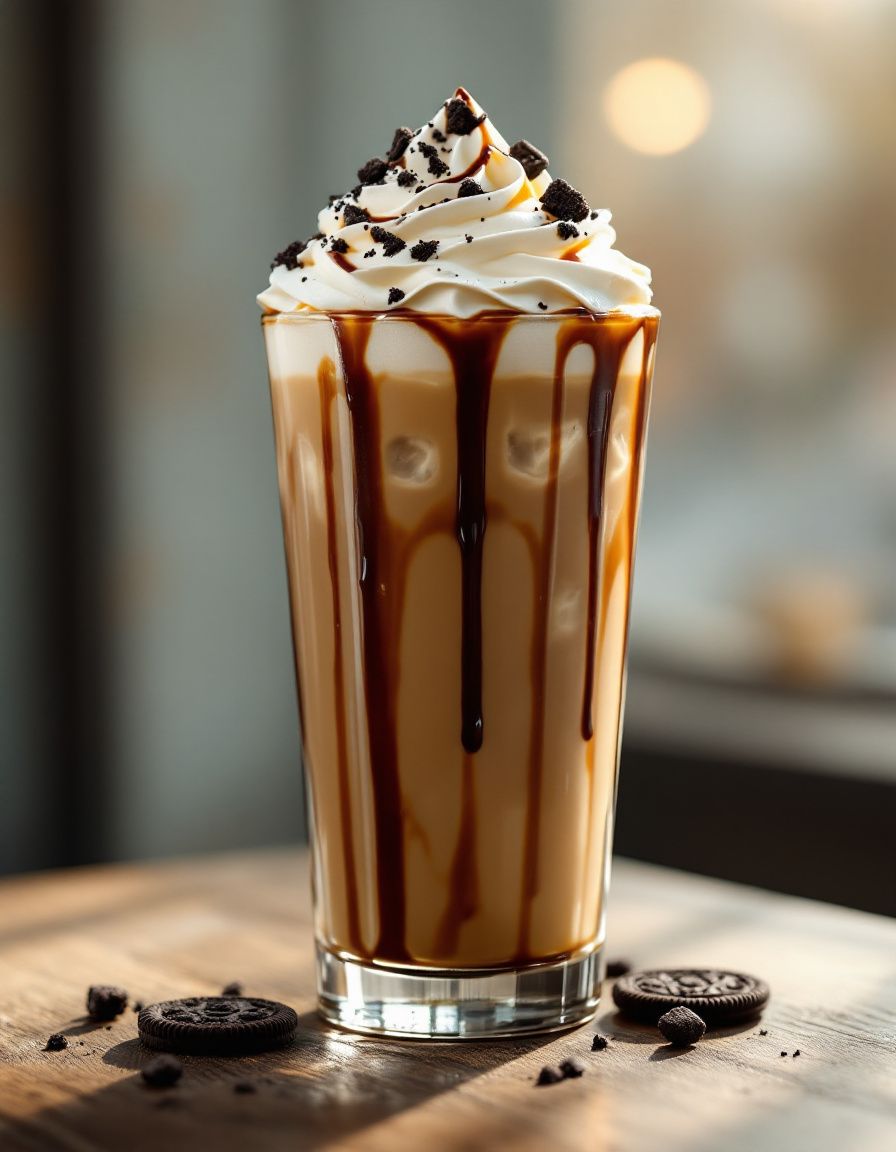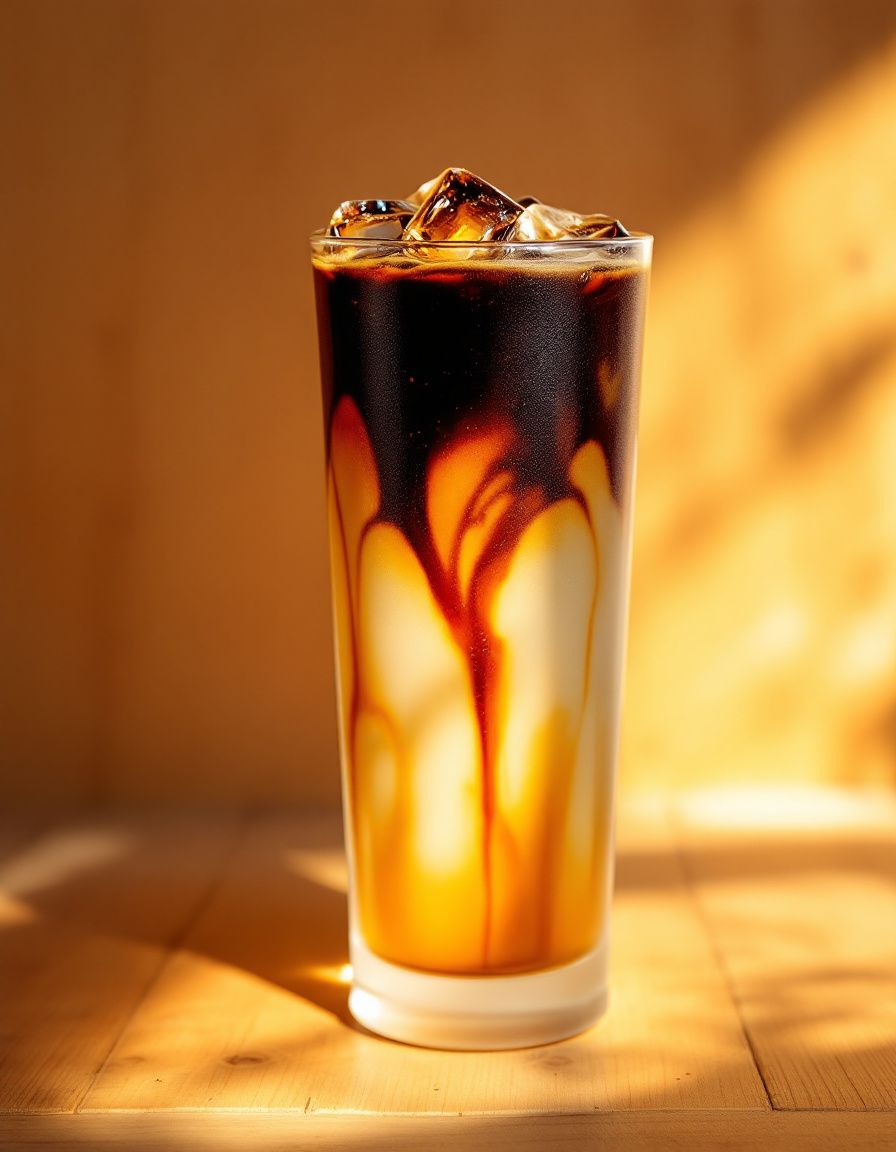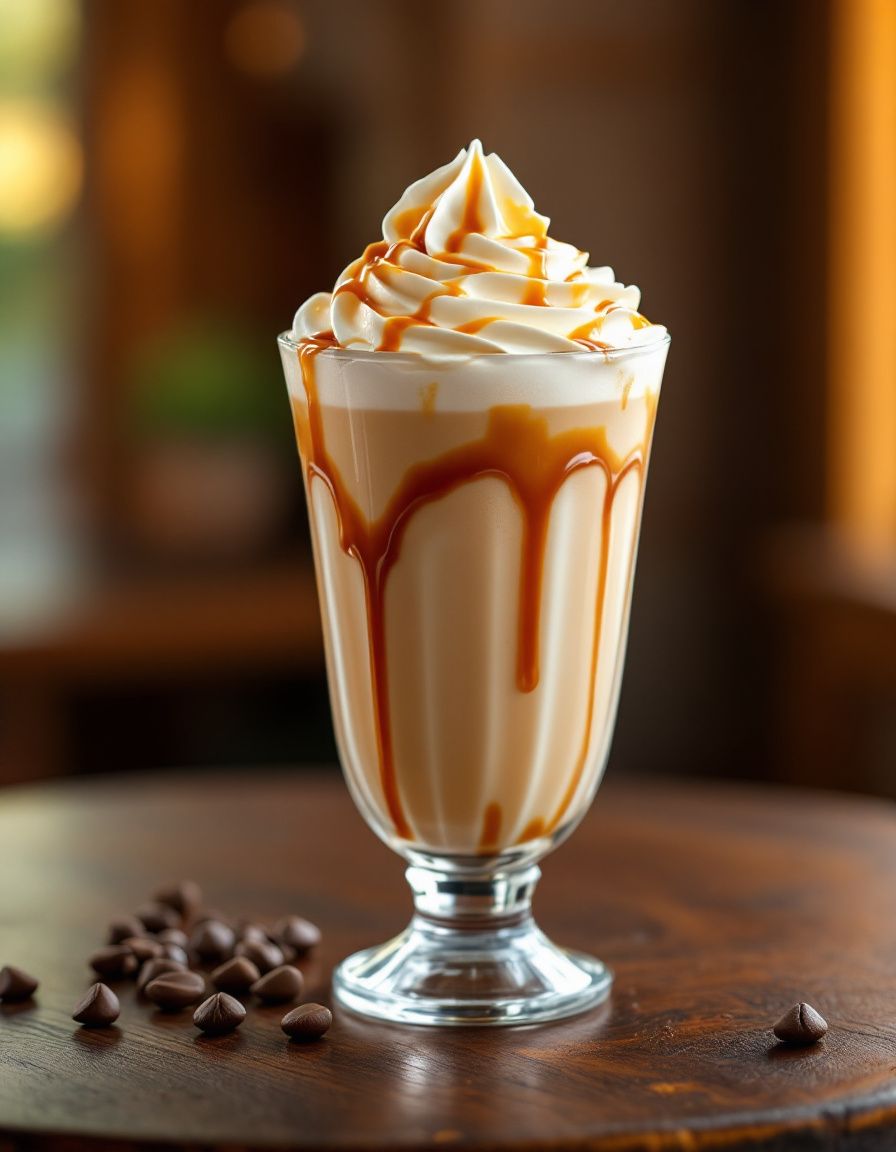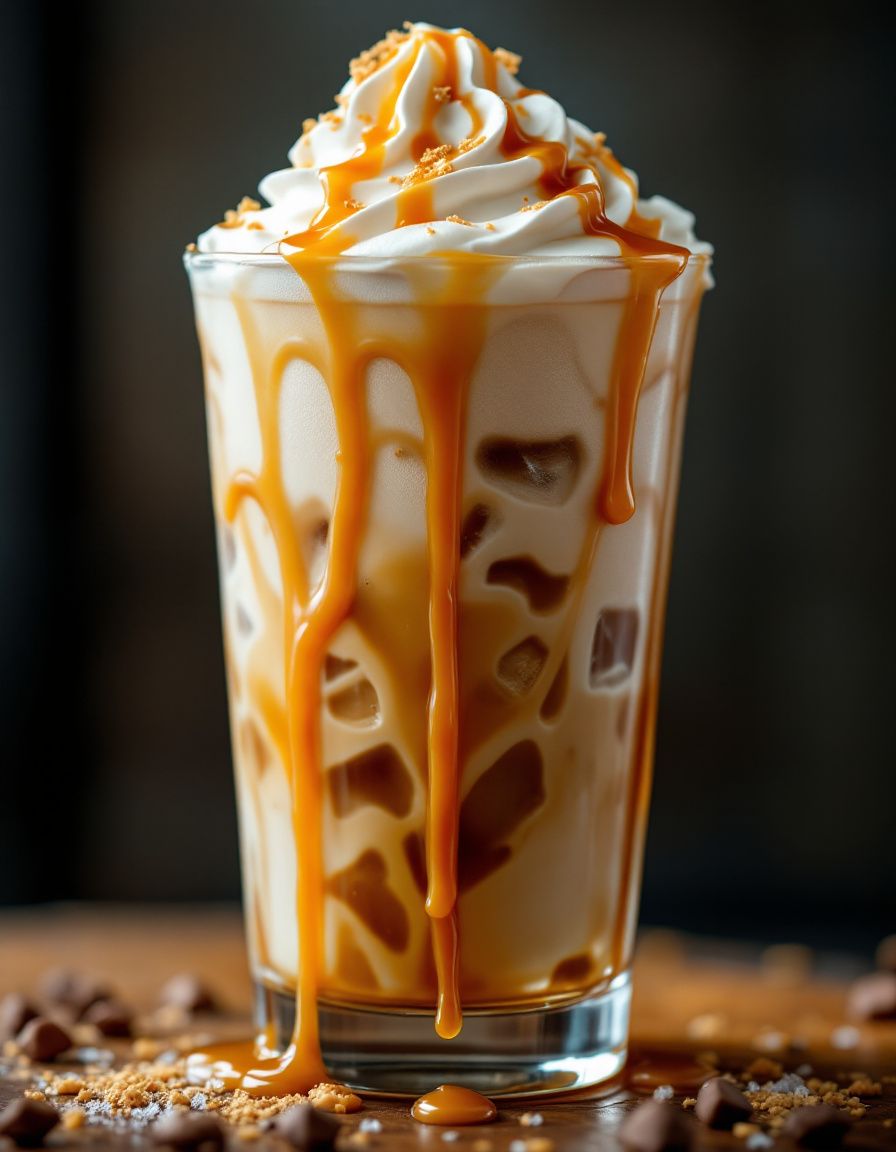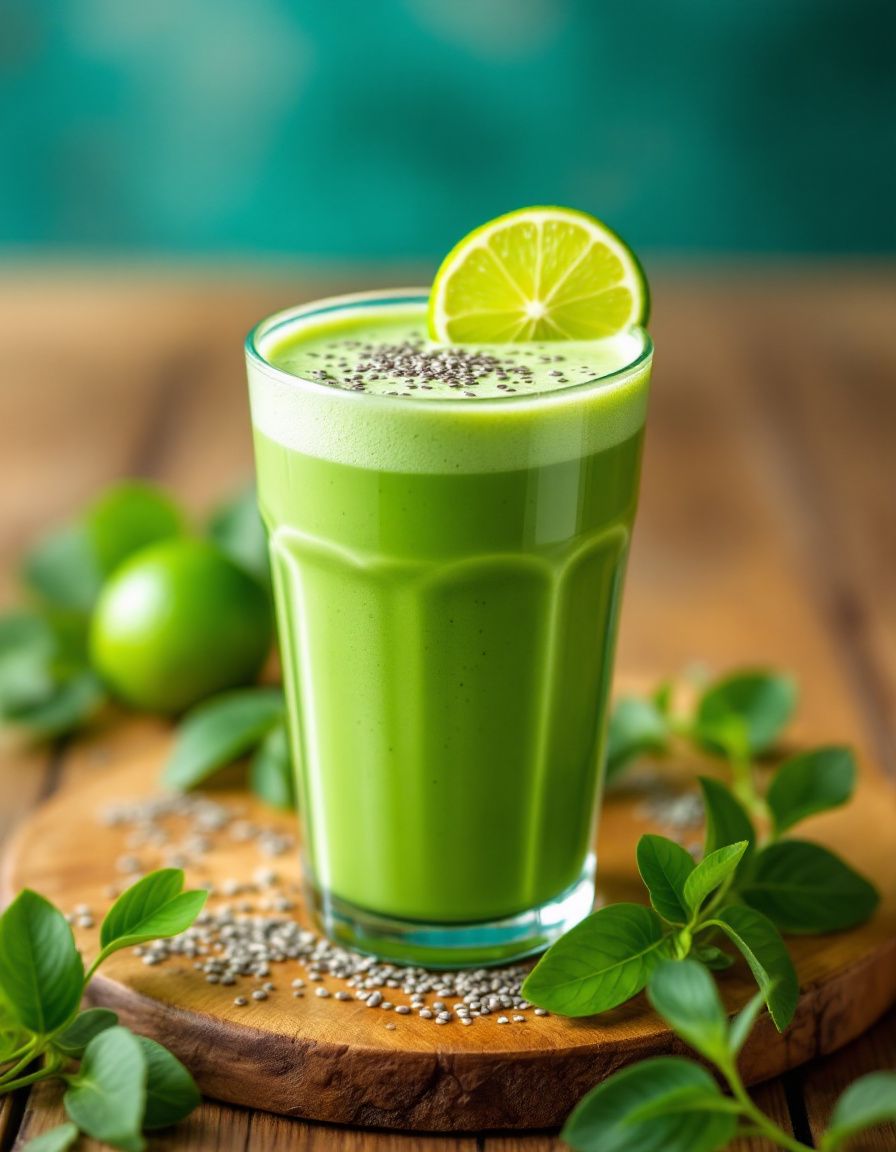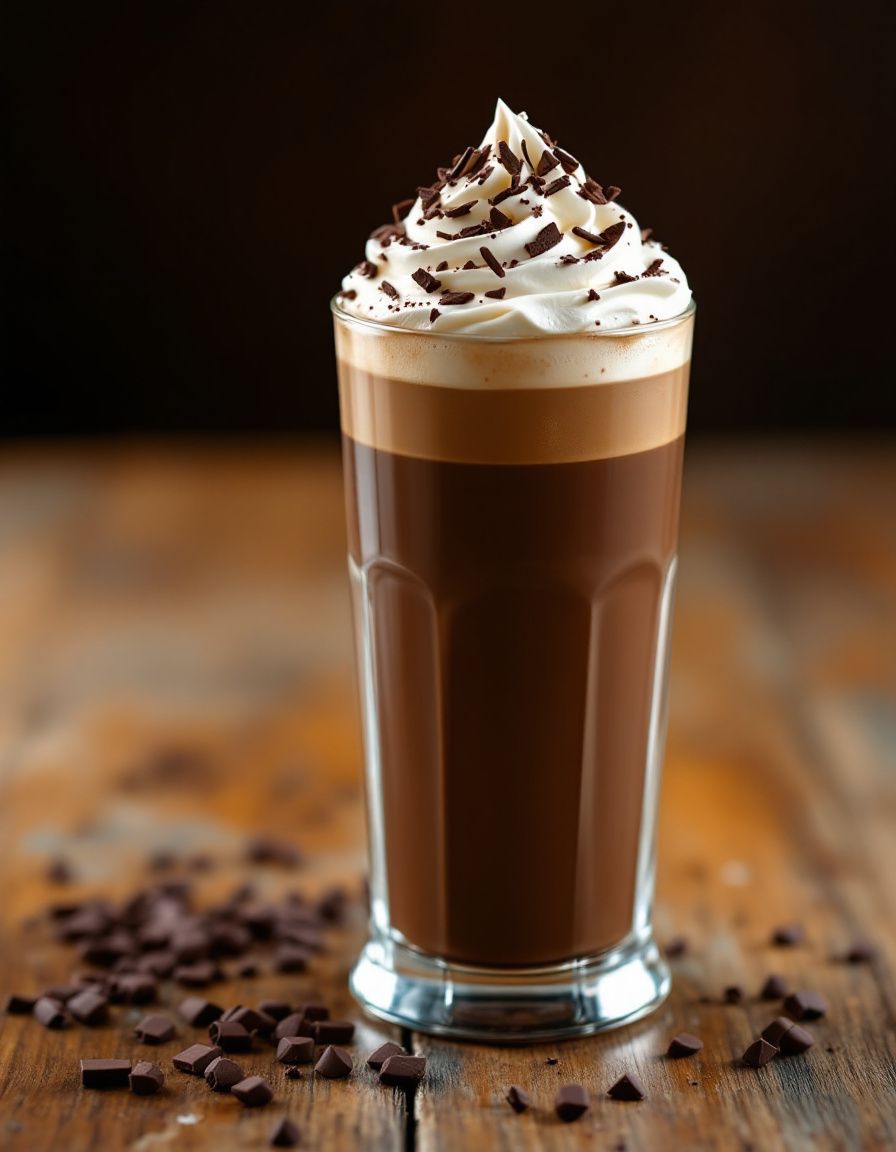Delicious Caramel Coffee – A Sweet Twist on Your Morning Brew
One of the most delightful ways to start your day is with a cup of Caramel Coffee. This indulgent drink blends the rich flavors of freshly brewed coffee with the sweet, decadent notes of caramel, creating an exquisite morning experience. Imagine sipping on this velvety concoction, where the aroma of roasted coffee beans mingles with the sweetness of caramel, offering a delightful respite from your daily routine. Whether you’re looking for a comforting weekend treat or a pick-me-up during a busy workday, this Caramel Coffee recipe promises to awaken your senses and elevate your coffee game.
The preparation of this Caramel Coffee is straightforward, making it accessible for any coffee lover looking to enhance their usual brew. As the smooth caramel slowly melts into the hot coffee, it creates a glossy, inviting surface that beckons you to take that first sip. With each taste, the harmony of flavors expands in your mouth—a perfect balance of bitter and sweet, blended with creamy undertones. Dive into the comforting embrace of this beverage as you savor the moment, delighting in its richness and warmth.
Quick Recipe Highlights
- Flavor Profile: The blend of bold coffee with caramel sweetness creates a luxurious taste experience.
- Texture: Creamy and smooth, with a delightful thickness from the melted caramel that coats your palate.
- Aroma: The aromatic notes of freshly brewed coffee infused with sweet caramel is incredibly inviting and uplifting.
- Visual Appeal: A beautiful golden-brown hue, topped with a frothy or whipped cream finish, makes this drink visually stunning.
- Skill Level Needed: This recipe is simple and ideal for beginners, requiring minimal culinary skill.
- Special Equipment: Just a coffee maker and a saucepan are required for this easy preparation.
Recipe Overview
- Difficulty Level: This Caramel Coffee is easy to make, allowing novices to effortlessly create a café-quality drink at home.
- Category: A delightful beverage perfect for breakfast, brunch, or a mid-afternoon pick-me-up.
- Cuisine: This recipe draws inspiration from classic coffee culture, blending in sweet dessert elements.
- Cost: Very economical, using inexpensive staples like coffee, sugar, and cream.
- Season: Perfect for all seasons; however, it may be especially comforting during the colder months.
- Occasion: Great for casual gatherings, coffee dates, or just a cozy solo morning treat.
Why You’ll Love This Recipe
Caramel Coffee is not just a drink; it’s an experience bursting with taste and texture. The combination of robust coffee and rich caramel creates an indulgent flavor that will leave you craving more. The sweetness of caramel perfectly balances the bitterness of coffee, offering a refined taste that can easily replace your regular morning cup. Each sip feels like a warm embrace, making it a soothing choice for any time of day.
The convenience of this Caramel Coffee recipe is another reason to love it. With simple ingredients and straightforward steps, you can whip up this delightful beverage in just 15 minutes. There’s no need for complex brewing techniques or specialized equipment; all you need is your favorite coffee and some caramel sauce. This makes it perfect for busy mornings when you still want something special.
From a nutritional standpoint, you can customize this Caramel Coffee to fit various dietary needs and preferences. Using milk alternatives or sugar-free caramel can make it a lighter option, while still delivering on flavor. It’s a beautiful way to enjoy your caffeine fix while indulging your sweet tooth without guilt.
This drink also has social value. Serving Caramel Coffee to friends or family can elevate any gathering, making it feel special and inviting. It’s an ideal offering for brunches or cozy get-togethers, proving that even simple moments can be accentuated with a little extra effort.
Lastly, the cost-effectiveness of this recipe cannot be overstated. With just a few ingredients that you likely already have at home, you can create a high-end beverage that rivals those from your favorite coffee shops—all without breaking the bank. This makes it an accessible treat for everyone to enjoy.
Historical Background and Cultural Significance
The origins of Caramel Coffee can be traced back to the rise of coffee culture around the world. Coffee became a staple in many households, and as the beverage gained popularity, so did the incorporation of sweeteners and flavors. Caramel, with its rich sweetness, was a natural complement to the bitter notes of coffee.
Culturally, coffee has always been more than just a drink; it’s a social connector. From the coffee houses of Europe in the 17th century to modern-day cafes, coffee brings people together. Adding caramel reflects a growing trend toward gourmet coffee experiences, allowing individuals to customize their drinks to their liking.
Over time, the recipe for Caramel Coffee has evolved. Initially, it may have focused on simply adding sugar or cream, but today’s versions often incorporate artisanal caramel sauces crafted from high-quality ingredients. This evolution showcases our continual desire for enhancing everyday experiences, including our coffee rituals.
Regional variations exist, with some cultures preferring additional toppings like whipped cream or spices, lending their unique touch to the beverage. These differences highlight the diverse ways people enjoy coffee around the globe, proving that there is no single right way to indulge in this delightful drink.
Ingredient Deep Dive
Coffee beans are the heart of any good Caramel Coffee. Originating from various regions around the world, the flavor profile of coffee varies significantly. Beans from South America tend to be milder, while African beans offer fruity and floral notes. These characteristics provide a rich foundation for your drink. Look for freshly roasted beans for the best flavor, as they will give your coffee a vibrant taste.
Caramel is another essential component. The process of making caramel involves heating sugar until it melts and transforms into a rich, golden syrup. This technique highlights the magic of cooking, creating a dessert flavor that complements coffee perfectly. For those short on time, store-bought caramel sauce offers great convenience while still allowing you to indulge.
Milk or cream can be added to enhance the beverage’s creaminess. Full-fat dairy adds a luxurious feel, while non-dairy alternatives like almond or oat milk create a lighter option. Regardless of the choice, a splash of cream or milk will enrich the drink’s mouthfeel, turning it from an ordinary cup of coffee into an extraordinary one.
Common Mistakes to Avoid
- Using old coffee beans: Freshness is key to a great cup. Stale beans can lead to a flat and less flavorful coffee.
- Overcooking the caramel: If the caramel is cooked too long, it can become bitter. Aim for a golden color for the best flavor.
- Poor water temperature: Brewing coffee with water that is too hot or too cold can affect extraction, making the coffee taste weak or bitter.
- Skipping the taste test: When combining ingredients, always taste your Caramel Coffee. Adjust sweetness or richness to your preference.
- Not using the right proportion of ingredients: Balance is crucial. Too much caramel can overwhelm the coffee flavor.
- Using cold milk in hot coffee: This can cause your drink to cool down quickly. Warm your milk or cream before adding it.
- Neglecting to brew coffee properly: Follow the recommended brew time and methods to ensure the best flavor is extracted.
- Using low-quality caramel: High-quality caramel will transform your drink. Avoid generic brands that lack flavor.
- Being heavy-handed with toppings: While whipped cream looks tempting, remember to maintain balance in flavors with toppings.
- Not experimenting: Don’t be afraid to try different coffee blends or additional flavors like vanilla or hazelnut in your Caramel Coffee.
Essential Techniques
One of the most critical techniques in crafting Caramel Coffee is brewing your coffee correctly. Start with coarsely ground coffee beans and use a coffee maker or French press. The key is to maintain the right water temperature, ideally between 195°F and 205°F. Proper extraction is vital; if the brewing process takes too long, your coffee can become bitter. Watch for the aromatic release that signals an optimal brewing time.
Making perfect caramel is another essential step. Begin by melting granulated sugar over medium heat, swirling the pan occasionally until it develops a golden hue. Mastery of caramel relies on attentiveness; it can quickly shift from ideal to burnt. Pay attention to the aroma—good caramel smells sweet and slightly toasted, whereas burnt caramel will have a darker, acrid scent. Familiarity with visual cues, such as color, will significantly help in mastering this sweet concoction.
Pro Tips for Perfect Caramel Coffee
1. Always grind your coffee beans fresh for the best flavor; invest in a good quality grinder for optimal results.
2. Use filtered water to brew your coffee for a cleaner taste. Chlorinated tap water can negatively impact flavor.
3. Experiment with different caramel sauces to find your preferred sweetness level. Artisanal or homemade caramel can add depth.
4. Add a pinch of salt to the caramel for an enhanced flavor profile. It balances sweetness and brings complexity.
5. Try different milks or creamers, such as flavored varieties, to give your Caramel Coffee a unique twist.
6. Opt for a unique serving glass to elevate the presentation; a clear glass shows off the layers beautifully.
7. Serve with a sprinkle of cocoa or cinnamon on top to add extra flavor and aesthetic appeal.
8. For an iced version, let your Caramel Coffee cool and serve it over ice for a refreshing summer treat.
Variations and Adaptations
Regional variations of Caramel Coffee can take your drink to new heights. For example, adding a dash of cardamom typically found in Middle Eastern coffee styles lends warmth and spice. During the fall, incorporating pumpkin spice can create a seasonal beverage that delights the taste buds.
Seasonal adaptations can involve using different ingredients; for summer, try using cold brew coffee mixed with caramel syrup and ice cubes for a refreshing twist. In contrast, winter can see caramel hot chocolate being combined for added richness.
Dietary modifications are also easy. Opt for almond or coconut milk for a vegan-friendly beverage that everyone can enjoy. You can also experiment with sugar-free caramel for a lighter option while still enjoying this delicious drink.
Flavor variations can be endless! Consider adding different extracts, such as hazelnut or vanilla, along with the caramel for a more complex beverage.
When it comes to texture modifications, consider heating and frothing your milk to create a luscious foam for a café-style experience. Alternatively, blending everything for a frappé twist results in a cold, thick drink that’s perfect for warm days.
Lastly, presentation can also vary. Serve your Caramel Coffee in a clear glass to showcase the drink’s beautiful layers and colors. Add whipped cream topping along with caramel drizzle for a visually stunning drink.
Serving and Presentation Guide
The way you serve your Caramel Coffee can elevate the entire experience. For the best visual appeal, present your drink in an elegant glass that showcases the layers of coffee and caramel. A clear cup gives your drink a beautiful aesthetic that highlights its inviting appearance.
Garnishing ideas include a dollop of whipped cream on top, with a drizzle of caramel sauce cascading down for added visual flair. A sprinkle of sea salt can enhance flavor while providing a nice contrast to the sweetness.
When considering traditional accompaniments, Caramel Coffee pairs beautifully with pastries or desserts, such as croissants or brownies. Create a cozy café atmosphere by presenting your drink alongside a small plate of treats.
Modern serving suggestions might include pairing your Caramel Coffee with a small scoop of vanilla ice cream for a unique twist. This creates an indulgent dessert experience that’s to die for.
Temperature is another important consideration; serve your Caramel Coffee hot, ideally between 150°F and 180°F to maintain its comforting qualities. If preparing an iced version, ensure the glass is chilled beforehand to keep the coffee refreshing.
Portion control is essential to avoid overwhelming your guests. A standard serving size of 8-12 ounces is typically adequate, ensuring everyone enjoys a sip without feeling stuffed.
Wine and Beverage Pairing
When it comes to pairing beverages with Caramel Coffee, consider dessert wines like Moscato or late-harvest Riesling, which can complement the sweetness of the caramel beautifully. These wines support the flavor of the coffee without overpowering it, creating a harmonious experience.
For non-alcoholic alternatives, herbal teas such as chamomile or mint are excellent choices. They provide a soothing contrast and soften the strong coffee flavor without clashing.
Pairing with coffee-infused beverages also works well; a mix of your favorite coffee liqueur, such as Kahlua, can elevate the experience to a dessert-level indulgence.
Temperature considerations play a role as well: pair your hot Caramel Coffee with slightly chilled beverages to create an enjoyable contrast. If enjoying iced Caramel Coffee, consider serving it alongside a frosty sparkling water or a light lemonade for a refreshing combination.
Finally, regarding serving suggestions, offer small shot glasses of complementary flavors on the side, such as cream liquors, to allow guests to customize their drinks according to their taste.
Storage and Shelf Life
Proper storage is crucial for ensuring the longevity and quality of your Caramel Coffee ingredients. Brewed coffee can generally be stored in an airtight container in the fridge for up to a week. It’s best to consume it within that time to maintain freshness and flavor.
For homemade caramel, store it in a sealed jar in the refrigerator. Properly stored, it can last for several weeks. Just make sure to give it a good stir and reheat it slightly before using it in your coffee.
If you have leftover Caramel Coffee, it’s advisable to consume it within 24 hours for the best taste. Storing it longer may lead to flavor degradation, as the coffee can absorb the flavors of the caramel too strongly.
Reheating instructions include placing the Caramel Coffee in a saucepan over low heat or using a microwave at intervals, stirring occasionally to ensure even heating without scorching.
Freezing guidelines are not typically recommended for brewed coffee as it can alter the flavor; however, if you do want to freeze caramel, pour it into ice cube trays for easy portioning.
Make Ahead Strategies
If you’re planning to serve Caramel Coffee for a gathering, consider preparing components ahead of time. Brew a large batch of coffee in advance, and store it in the refrigerator. This allows for a quick assembly when guests arrive.
The caramel sauce can be made a day or two in advance. Simply reheat it gently before use to return it to a pourable consistency.
To best assess quality impact, be cautious about adding milk or cream until just before serving, since dairy can separate or spoil when prepared ahead of time.
Assembling is easy; simply combine the cold coffee, warmed caramel, and preferred milk together in a pitcher to streamline the final steps.
Reheating any leftover Caramel Coffee can be done on the stovetop or microwave, but remember to taste it before serving to adjust sweetness or creaminess as needed.
Incorporating fresh elements, such as whipped cream or chocolate shavings, at the last moment can elevate the experience even further.
Scaling Instructions
When it comes to scaling the Caramel Coffee recipe, halving or doubling can be straightforward. If you wish to halve the recipe, simply divide all ingredients according to the number of servings needed.
Doubling or tripling the recipe for a gathering? Ensure to keep track of brewing times and adjust the size of your coffee maker if needed. A larger pot will likely require longer brewing times to account for the increased volume.
Equipment adjustments may entail using larger measuring devices and pots to make handling easier and to avoid spills.
Timing modifications are vital; brew in batches if necessary, as overloading coffee makers may lead to weaker coffee.
When storing additional servings, remember to cool the coffee quickly after brewing and store it in airtight containers to preserve freshness.
Nutritional Deep Dive
Analyzing the macro breakdown of Caramel Coffee reveals a mixture of carbohydrates, fats, and proteins based on your ingredient choices. Coffee itself is low-calorie, but the addition of sugar and cream can significantly increase the total caloric intake.
Examining micronutrient content shows that coffee is rich in antioxidants, which may provide health benefits. The sugar in caramel, while delicious, adds minimal nutritional value, so moderation is key.
Health benefits of moderate coffee consumption include improved cognitive function and enhanced metabolism. However, it’s essential to remain mindful of total caffeine intake throughout the day.
Dietary considerations should note any lactose-intolerance when using cream or dairy. Gluten is not a concern, but people with sugar sensitivities should keep an eye on the caramel sauce’s sweetness.
From a portion analysis, a standard serving of Caramel Coffee typically falls between 8 to 12 ounces for optimal enjoyment without overindulging. Weight management tips include considering lower-calorie alternatives for caramel or sweeteners to reduce total sugar content.
Dietary Adaptations
You can easily modify Caramel Coffee for various dietary needs. For those following a gluten-free diet, all ingredients in this beverage are naturally gluten-free, although it’s wise to ensure that any store-bought caramel sauces are labeled as such.
Dairy-free versions can be created using nut or oat milk as substitutes for regular milk or cream, making it inclusive for vegan diets as well. Gluten-free and dairy-free caramel sauces are also widely available.
Those on a low-carb or keto diet can replace sugar with stevia or erythritol while using unsweetened almond milk as a base, keeping the indulgent flavors without the carbs.
Paleo dieters might enjoy using coconut cream and a homemade caramel sauce that relies on coconut sugar as an alternative sweetener.
Low-FODMAP individuals can use lactose-free milk and ensure that caramel sauces do not contain high FODMAP ingredients, keeping the final beverage safe for their needs.
Troubleshooting Guide
If you encounter texture issues in your Caramel Coffee, blending may resolve the problem. Use an immersion blender for a smooth consistency, especially if any ingredients separate.
Flavor balance can be addressed by adjusting caramel levels; if too sweet, adding a touch of salt or more coffee can help rectify it, leading to a more enjoyable taste profile.
Temperature problems may arise if coffee cools too quickly. Consider pre-warming your serving vessels to maintain the heat or using thermal mugs.
Equipment challenges can often be solved by checking your coffee maker’s instructions to ensure you’re setting it up correctly for optimal brewing.
If you’re facing ingredient substitution challenges, feel free to replace traditional caramel with sauces that align with dietary needs while maintaining the same proportions for sweetness.
For timing concerns, remember to prioritize brewing and caramel preparation; if fiery moments arise, let caramel cool slightly before incorporating into the hot coffee to avoid possible burns.
Recipe Success Stories
Community feedback on Caramel Coffee often highlights its delightful taste and simplicity. Many readers have shared adaptations, from swapping out different flavorings to incorporating seasonal spices that reflect their preferences.
Variation successes abound, with numerous users taking inspiration to create seasonal specialties like a spiced caramel version for fall or a mint-infused treat during the holidays, further spreading its popularity.
Readers’ suggestions often include tips on different types of coffee blends and how each one makes an impact on the overall flavor. This interaction enriches the community’s experience as they share successes in creating their Caramel Coffee masterpieces.
Photography enthusiasts enjoy snapping photos of their finished drinks, highlighting the colorful layers and frothy toppings. This not only showcases personal creativity but also inspires others to experiment with their presentations.
Engagement within the community makes it a joy to learn how others interpret this delicious recipe, turning a simple Caramel Coffee into a canvas of flavors and creativity.
Frequently Asked Questions
Yes! You can brew the coffee and prepare the caramel in advance. Just let the coffee cool and store it in the refrigerator, reheating it before serving.
2. How do I adapt this recipe for a crowd?
To serve multiple people, brew a larger quantity of coffee and scale the caramel and milk proportions accordingly. A coffee maker with a higher capacity works best here.
3. What’s the best type of coffee to use?
A medium roast coffee generally complements the sweetness of caramel well. Feel free to experiment with your favorite blends to find the right flavor balance for you.
4. Can I use store-bought caramel?
Absolutely! Store-bought caramel sauce can save time and is often delicious. Just ensure you pick one with quality ingredients for the best flavor.
5. Is it possible to make a sugar-free version?
Yes! Substitute regular sugar and caramel with sugar-free sweeteners and syrups. Many brands offer versions that taste great without adding the calories.
6. Can I add other flavors besides caramel?
Definitely! You can add vanilla extract, hazelnut syrup, or even chocolate for a unique twist. The idea is to experiment with flavors that you enjoy.
7. How can I thicken the coffee?
If you want a thicker consistency, consider adding cream instead of milk or using a frother to incorporate air and create a rich texture.
8. Is it easy to veganize Caramel Coffee?
Yes! Simply replace dairy milk with any plant-based alternative and use vegan caramel sauce. It’s super easy to make it inclusive for everyone.
9. Can I make this as an iced drink?
Absolutely! Let your coffee cool, mix in the caramel, and serve it over ice for a refreshing treat that’s perfect for warm weather.
10. What type of milk is best?
The best milk depends on personal preference. Whole milk offers a rich flavor, while almond or oat milk provides a lighter touch; experiment and enjoy!
Additional Resources
If you’re eager for more caffeine inspiration, check out related recipes, including flavored lattes and coffee cake, both perfect for pairing with your Caramel Coffee. Explore technique guides on frothing milk or brewing methods to hone your coffee skills further.
Ingredient information is also available for coffee varieties, caramel-making tutorials, and how to choose the best creamers to enhance your morning brew.
For equipment recommendations, consider investing in good-quality coffee makers or frothers to elevate your coffee experience. Seasonal variations can also extend beyond Caramel Coffee, with recipes for refreshing spring and summer drinks.
Join the Conversation
We’d love to hear from you! Share your own Caramel Coffee creations on social media and don’t forget to tag us. Posting pictures of your beverages can inspire others and foster a stronger community around coffee culture.
Join discussions around personal variations and tips for improving the recipe. Community engagement creates the perfect chance to learn from one another, ensuring that every cup gets better.
Feel free to leave a recipe review sharing your thoughts and adaptations. Your feedback helps others discover the joys of Caramel Coffee.
Experimentation and creativity with this recipe are encouraged; try new flavors or serving methods, and share your favorites with us. Let’s continue celebrating coffee together!
The Recipe
Caramel Coffee
Serves: 2
Prep Time: 5 mins
Cook Time: 10 mins
Total Time: 15 mins
Kitchen Equipment Needed
- Coffee maker or French press
- Small saucepan
- Measuring cups
- Stirring spoon
- Serving glasses
Ingredients
- 2 cups brewed coffee
- 2-4 tablespoons caramel sauce
- 1/2 cup milk (or non-dairy alternative)
- Optional: whipped cream and additional caramel for topping
Directions
- Brew your favorite coffee using a coffee maker or French press.
- In a small saucepan, heat the caramel sauce over low heat until it’s warm and pourable.
- Pour the brewed coffee into mugs, then add the warm caramel sauce. Stir well to combine.
- Add milk to the mixture, adjusting to your desired creaminess.
- Top with whipped cream and drizzle additional caramel sauce, if desired. Serve hot and enjoy!
Recipe Notes
- Feel free to adjust the amount of caramel to your taste preference.
- This recipe can easily be scaled up for larger gatherings.
- Experiment with different types of coffee to find your favorite flavor combination.

